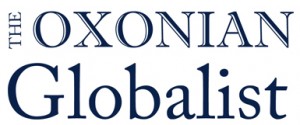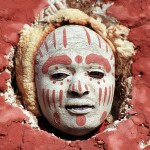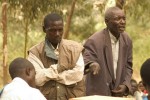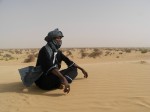Rebuilding Society
An investigation into the success and sustainability of the progression of Sierra Leone from its Civil War

Freetown, the cramped capital, a home to many ex-military in the slums. Photo by Church Mission Society via Flickr.
In 1991, Sierra Leone was plunged into a Civil War that would take over 50,000 lives and result in the displacement of around 2.6 million people. Children were abducted and forced to become soldiers or sex workers. Civilians were raped, mutilated, and had their limbs amputated. Some were captured as slaves and forced to mine diamonds to finance the conflict. Only in September 2010 did the UN Security Council feel that they could lift the final remaining sanctions against Sierra Leone. So, to what extent has Sierra Leone recovered from the conflict, and is there hope for the future?
The state of domestic politics is mixed. Although, like so many other Sub-Saharan African countries, it struggles with transparency and corruption, Sierra Leone is now a functioning democracy. However, political discourse is destructive, and partisan rivalries regularly collapse into violence. Especially worrying is the fact that this is committed largely by unemployed young men, particularly ex-combatants.
Yet, though those in positions of leadership have yet to fully shirk violence and poisonous political dialogue, it seems that there is a potentially successful political structure present. The two main parties are those which originally opposed each other in 1955, and the overall political system is one of the most stable in Africa.
Green Shoots of Growth
It is truly remarkable that Sierra Leone has managed to recover as well as it has from the conflict, especially considering the extent to which infrastructure was crippled. Sierra Leone has managed consistent and stable economic growth in recent years, but still suffers from a few key economic disadvantages. There is a lack of diversity in the economy, meaning that the country is very vulnerable to commodity price shocks; infrastructure, especially the quality and penetration of the road network is still not sufficient; there is chronic underinvestment, especially in rural, non-mining areas; economic growth is not fairly distributed.
For example, although natural resources bring in craved foreign investment, much of this is spent on expatriate salaries and does not trickle down to ordinary Sierra Leoneans. The so-called “blood diamonds” which helped finance and propagate the conflict, are now legally exported: between 2002 and 2005 export profits exploded from $26 million to $142 million. However, the distribution of the benefits brought by diamonds is incredibly inequitable, with the miners themselves receiving a minute fraction of the wealth, whilst those in foreign headquarters reap the rewards.
Moving On
Sierra Leonean society is incredibly resilient and very functional. Although its politics is broadly divided along ethnic lines, the Civil War was not fought on a racial or tribal basis and it is largely a country of great religious tolerance. Throughout the past decade there seems to have been a feeling that people just want to leave the trauma of the fighting behind them. Prevalent poverty also meant for the vast majority that moving on was the only option.
However, one of the chief challenges in progressing from the war has been re-integrating ex-combatants. Besides a handful of top-level commanders, soldiers on both the government and rebel sides were not tried for their crimes after the war. Either ashamed of their previous actions or drawn to the urban lifestyle, many did not return to their local communities and a significant proportion now live in majority ex-military slums in cramped Freetown, the capital. In these slums, drugs, sexually-transmitted diseases including HIV, and unemployment are chronic problems. Ex-combatants, especially the rebel fighters, are still economically and socially marginalised, making them politically both a vulnerable and dangerous group.
Yet, it was not just ex-combatants who have been drawn to the capital. An already cramped peninsula-bound city, Freetown received an influx of people fleeing the fighting in the provinces during the course of the conflict. Hills, narrow streets, and a chronic lack of space make infrastructural investment incredibly difficult, especially with such a rise in population. The slums in Freetown are a breeding-ground for diseases caused by poor sanitation, such as cholera. The war did not cause Freetown’s problems, but it certainly exacerbated them.
Fighting Stereotypes
Much of the Western journalistic coverage of the conflict reported the war’s most shocking atrocities: the amputations of civilians’ hands, the forced mining of ‘blood diamonds’ or the use of child soldiers. Whilst all these examples of barbarism had a direct and horrific impact on ordinary people, arguably these are events which need to be put into context. For example, although civilians did have their limbs amputated, many people, especially combatants, had their legs blown off by landmines. Whilst many hand amputees now receive help from charities and NGOs, sufferers of polio and other debilitating conditions don’t often receive the same levels of support.
Although the war had a direct, long-lasting physical and psychological impact on particular individuals, this suffering has to be put into the context of a country which was not only at war for over a decade, but which had been a victim of horrendous poverty for far longer. The war left its scars, but many of the problems of recovering from the conflict are issues shared by the rest of sub-Saharan Africa: a need for more education, jobs, investment, egalitarian distribution of economic growth, social progress, and transparent, long-lasting political institutions.
The Future
The chief reason why the Sierra Leonean recovery still seems vulnerable is because the original problems which initially sparked the conflict are still prevalent today. Sierra Leonean youths are incredibly cosmopolitan: they listen to Caribbean music, follow British football and watch American television. As Zoe Marks, a researcher at the Oxford University African Studies Unit understands it, “young people in Sierra Leone know how much they are missing out on.” The original promises of the 1980s have been deferred yet again, leaving young people especially to feel marginalised and desperate for jobs, social advancement and prosperity.
Yet it seems that there is cause for hope. Although Sierra Leone’s small size means that it struggles to have its voice heard internationally, it makes its goals of successfully consolidating and improving on the gains of the last ten years achievable. Sierra Leone still has an array of social, political and economic problems, which were either created or worsened by the conflict.
However, its society is incredibly resilient, economic growth has been achieved, and there seems to be a will in the country to put the image of a war-torn African country behind it. In order to achieve this future the youth will be crucial. Such a large and potentially powerful group cannot and will not be marginalised forever. It seems the opportunity is there for Sierra Leone, it’s just a matter of whether such opportunity will be taken.








Excellent and very informative, if a little optimistic (that could just be because i’m a cynic). The huge amount of money that western “civilised” governments and approved arms dealers made out of the conflict needs a mention though!